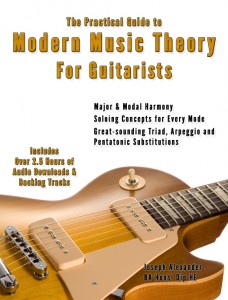The Lydian Mode for Guitar Part 3 – Arpeggios and Triads
The final section in this series looks at how we can use arpeggios and substituted pentatonic scales to solo in new ways over the Lydian Mode. Make sure you’re up to speed from part 2 before attempting this lesson.
4-Note Arpeggios
When we extend the triad to become a 4 note arpeggio, we have another level of texture and intervallic selection we can use over the modal key centre. By using 4 note arpeggios we can be extremely articulate about which notes we choose to play from a mode. The arpeggios built from the Lydian mode are:
| Scale Degree | 4 Note Arpeggios in Lydian | Intervals Against Tonic |
| 1 | I major 7 | 1, 3, 5, 7 |
| 2 | II7 | 9, #11, 13, 1 |
| 3 | iii minor 7 | 3, 5, 7, 9 |
| #4 | #iv minor 7b5 | #11, 13, 1, 3 |
| 5 | V major 7 | 5, 7, 9, #11 |
| 6 | vi minor 7 | 13, 1, 3, 5 |
| 7 | vii minor 7 | 7, 9, #11, 13 |
These can be played in 2 octaves in the following manner. The lowest note in each shape is not always the root.
(Final Example)
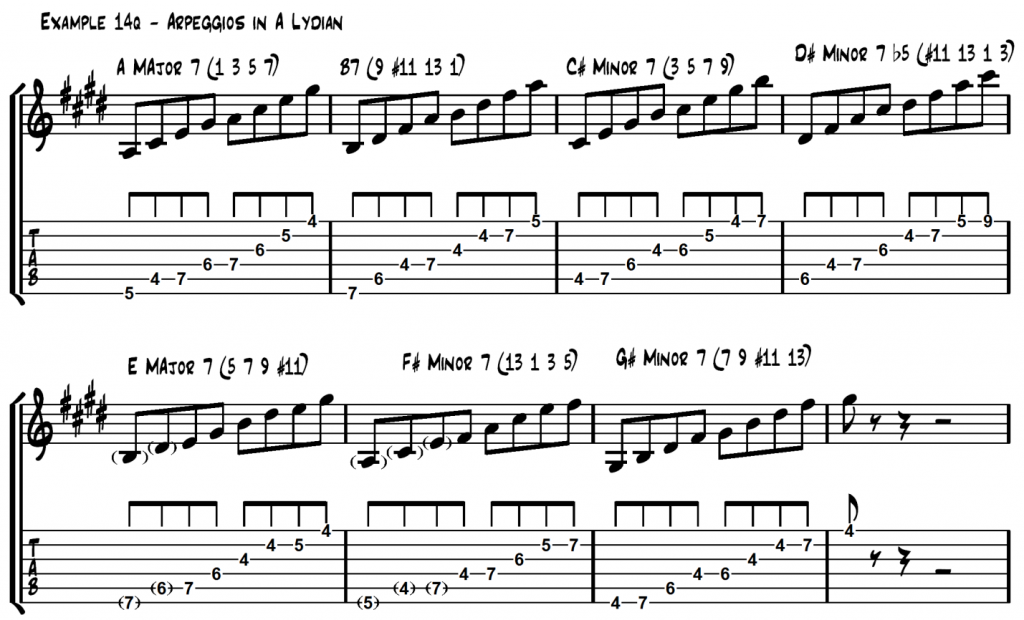
Two great choices are
Minor 7b5 on the #11th. (D#m7b5 over A Lydian) (#11, 13, 1, 3).
Minor 7 on the 3rd (C# minor 7 over A Lydian) (3, 5, 7, 9).
5-Note Pentatonic Scales
It is extremely common to superimpose minor pentatonic scales over the Lydian mode. They can be built from the 3rd, 7th and 13th. To really highlight the Lydian #11 use a minor pentatonic scale build from the 7th degree of the mode. The options are
Example 14r: Minor pentatonic on 3:
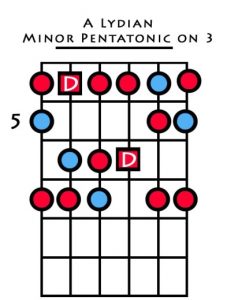

Intervals played against the root of Lydian: 3, 5, 13, 7, 9.
Example 14s: Minor pentatonic on 7:
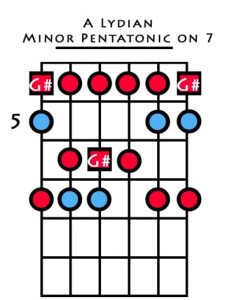

Intervals played against the root of Lydian: 3, 7, 9, #11, 13.
Example 14t: Minor pentatonic on 13/6:
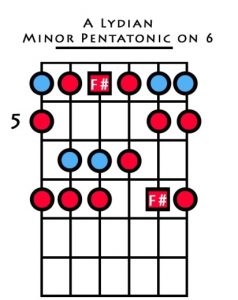

Intervals played against the root of Lydian: 1, 3, 5, 9, 13.
My first choice is to play the minor pentatonic on the 7th (G# minor pentatonic over A Lydian) ( 7, 9, 3, #11, 13).
First Choice Soloing Summary for the Lydian Mode
Parent Scale: Lydian
Intervals: 3rds and 5ths
Triads: Minor triad on 7 / Minor triad on 3
Arpeggio: Minor 7b5 on #11th / Minor 7 on 3
Pentatonic: Minor pentatonic on the 7
These lessons on how to dissect modes for guitar are a sample of the much more comprehensive work, The Practical Guide to Modern Music Theory for Guitarists;
The full book is a complete and PRACTICAL music theory course for guitarists takes you on a journey starting from simple major scale construction, its 3 and 4 note harmonisations, and common chord sequences, to a massively deep and structured dissection of all the modes of the major scale.
“The artists you work with, and the quality of your work speaks for itself.”
Tommy Emmanuel
© Copyright Fundamental Changes Ltd 2025
No.6 The Pound, Ampney Crucis, England, GL7 5SA

